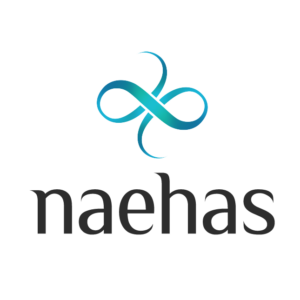In its ongoing effort to curb inflation and create economic stability, the Federal Reserve’s Federal Open Market Committee (FOMC) announced an increase in interest rates after its September meeting. As noted in its statement issued September 21, 2022:
“Recent indicators point to modest growth in spending and production. Job gains have been robust in recent months, and the unemployment rate has remained low. Inflation remains elevated, reflecting supply and demand imbalances related to the pandemic, higher food and energy prices, and broader price pressures.
 Russia’s war against Ukraine is causing tremendous human and economic hardship. The war and related events are creating additional upward pressure on inflation and are weighing on global economic activity. The Committee is highly attentive to inflation risks.
Russia’s war against Ukraine is causing tremendous human and economic hardship. The war and related events are creating additional upward pressure on inflation and are weighing on global economic activity. The Committee is highly attentive to inflation risks.
The Committee seeks to achieve maximum employment and inflation at the rate of 2 percent over the longer run. In support of these goals, the Committee decided to raise the target range for the federal funds rate to 3 to 3-1/4 percent and anticipates that ongoing increases in the target range will be appropriate. In addition, the Committee will continue reducing its holdings of Treasury securities and agency debt and agency mortgage-backed securities, as described in the Plans for Reducing the Size of the Federal Reserve‘s Balance Sheet that was issued in May. The Committee is strongly committed to returning inflation to its 2 percent objective.
In assessing the appropriate stance of monetary policy, the Committee will continue to monitor the implications of incoming information for the economic outlook. The Committee would be prepared to adjust the stance of monetary policy as appropriate if risks emerge that could impede the attainment of the Committee’s goals. The Committee’s assessments will take into account a wide range of information, including readings on public health, labor market conditions, inflation pressures and inflation expectations, and financial and international developments.”
Why Top Banks are Leveraging Automation to Reduce Risk
For bank executives, of any size institution, especially in a volatile market, the top priority is clear: avoid mistakes! With multiple rate changes made by the Federal Reserve and its FOMC in 2022, managing risk amidst consistent change is essential. To that end, automation has become a critical cog in the wheel of better processes, improved cycle times, and reduced errors.
A Bank Marketer’s Wish List
- Build pricing flexibility to enable scaling of products and pricing to support
- Customer Relationship and Credit Card, Product Line growth plans
- Reduce cycle time to complete rate changes across all channels
- Digitally transform and automate a disparate and complex manual processes
- Reduce risk and improve business resiliency by having a single system of record for pricing and disclosures
Automation is the key that turns those time-consuming, error-prone manual processes into easy-to-use comparison tools that manage changes in regulated content for better outcomes.
With more Prime Rate changes expected from the Federal Reserve and two more Federal Open Market Committee (FOMC) meetings in 2022, the time for banks to pivot to automating pricing and offer changes is now.
The New 3 Rs: Risk, Rates, Resources
To manage risk in a time of unprecedented rate changes in such a short time, banks need to leverage innovative solutions that deliver impactful benefits. Banking business as usual is no longer an option. Reducing risk requires tapping technology. Learning it first is key.
 Leading industry voices and vendors have echoed a strong sentiment since the pandemic, and the resulting digital transformation in banking. Tech is here to help, and is critical to both strength and survival. Those financial service institutions which prioritize technology, and training staff at all levels, will be best-positioned to create exceptional customer experiences that help them land and expand relationships.
Leading industry voices and vendors have echoed a strong sentiment since the pandemic, and the resulting digital transformation in banking. Tech is here to help, and is critical to both strength and survival. Those financial service institutions which prioritize technology, and training staff at all levels, will be best-positioned to create exceptional customer experiences that help them land and expand relationships.
After supporting top banks and credit card issuers through the complexities of disclosures, compliance and offer management, we’ve found eight core benefits realized by financial institutions who leverage our solution and employ automation for disclosure management.
8 Core Benefits of Automation
- Automate to accelerate growth
- Optimize workflow
- Realize operational efficiencies
- Dramatically reduce risk
- Decrease manual errors and avoid fines
- Increase/improve regulatory compliance processes
- Achieve greater speed to market
- Generate revenue
When your compliance and risk management teams are able to provide transparent disclosures, and you have confidence that your regulated content review process has reduced manual errors, the increased auditability is good for both the compliance managers and regulators. Prioritizing compliance and disclosure management is critical to not only avoiding massive fines, but to creating an atmosphere of transparency and reduced risk that supports the organization and its stakeholders.
While no one can, nor dares to, predict the precise changes, nor impact, that will be experienced as rates and market conditions change, one thing seems certain: volatility.
Reacting to market conditions quickly, without errors, is critical. Innovation meets that need.
Being able to react to ever-changing, uncertain market conditions is requiring banks to leverage automation to avoid mistakes, reduce risk and enhance their processes. Our team has recently developed a guide to answer common questions and address pain points. It endeavors to help those in key roles best navigate these extraordinary circumstances, and emerge with a resilience that delivers reduced risk, improved processes and better customer relationships.
The time to tune into the ways technology delivers top tier and mid-level banks must-have solutions is now.
 Agile marketers at banks need to be able to quickly adapt. Especially with the Fed rate changes, martech leaders need to find the solution to easily implement a prime rate change across a multitude of offers, disclosures, updating marketing and creative materials. As Andrew Roth notes in a video on adapting to frequent prime rate changes, “This process can take weeks or up to a month to implement, not to mention blowing up your budget and giving you a headache.”
Agile marketers at banks need to be able to quickly adapt. Especially with the Fed rate changes, martech leaders need to find the solution to easily implement a prime rate change across a multitude of offers, disclosures, updating marketing and creative materials. As Andrew Roth notes in a video on adapting to frequent prime rate changes, “This process can take weeks or up to a month to implement, not to mention blowing up your budget and giving you a headache.”
Now more than ever, automation and its benefits deserve a brighter spotlight. Change is the only constant. It seems certain more Federal Reserve rate changes are on the way before year’s end. Today, leading technology like platforms, purposely-built for heavily-regulated financial institutions, answer the current and clarion call for bank leaders and their marketing and compliance managers seeking a strong position moving into the year ahead.






